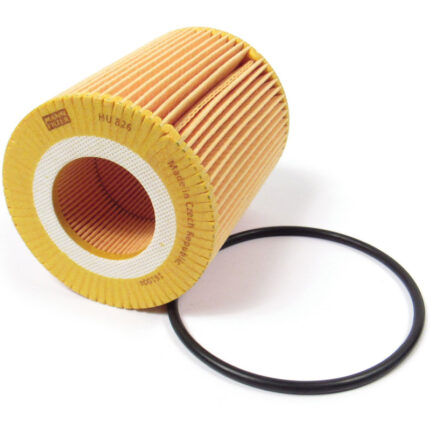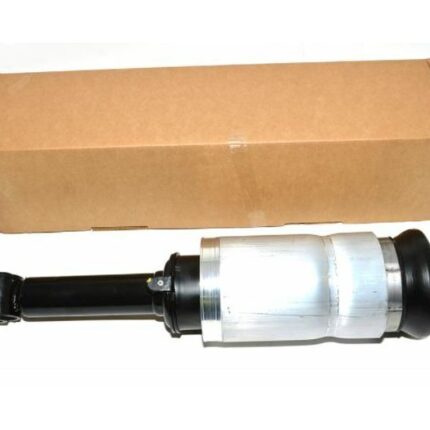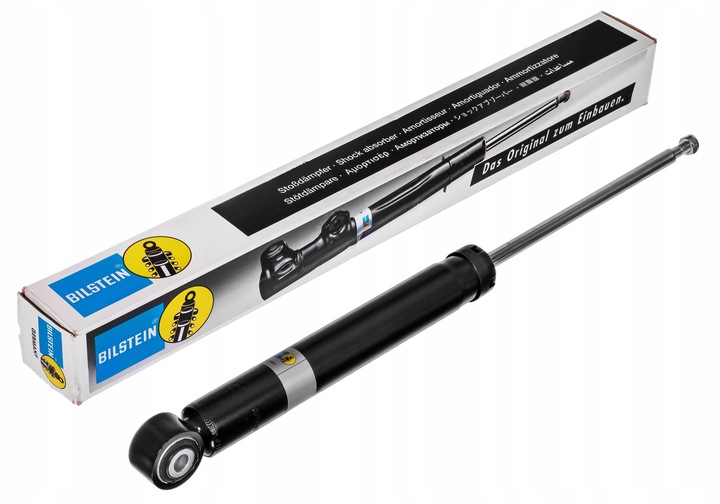-16%
Get Rear Shock Absorber Bilstein 5N0513049 For VW Tiguan/ Audi Q3 8UB,8UG
Shock absorbers, often simply called shocks, are critical components of a vehicle’s suspension system. They play a vital role in providing a smooth and controlled ride by absorbing and dissipating energy from road impacts. Here’s an in-depth look at shock absorbers, their functions, types, and importance:
Key Functions of Shock Absorbers
- Damping Oscillations
- Primary Function: Shock absorbers dampen the oscillations of the vehicle’s springs. Without them, the springs would continue to bounce after every bump, leading to an uncomfortable ride.
- Energy Dissipation: They convert the kinetic energy from suspension movement into heat, which is then dissipated through the hydraulic fluid or gas within the shock.
- Maintaining Tire Contact
- Stability: By controlling the movement of the suspension, shocks help keep the tires in contact with the road. This ensures better traction and stability.
- Safety: Consistent tire contact with the road surface is essential for effective braking and handling.
- Improving Ride Comfort
- Vibration Reduction: Shock absorbers smooth out the vibrations and jolts from driving over rough or uneven surfaces.
- Comfort: They provide a more comfortable ride for passengers by reducing the harshness of road impacts.
Components of Shock Absorbers
- Piston and Rod
- Piston: Moves within the shock body, controlling the flow of hydraulic fluid.
- Rod: Connected to the piston, extends out of the shock body, and attaches to the vehicle’s suspension.
- Hydraulic Fluid or Gas
- Fluid: Most shock absorbers use hydraulic fluid to provide damping. As the piston moves, it forces the fluid through small orifices, creating resistance.
- Gas: Some shocks use gas (often nitrogen) to reduce foaming and improve performance under high stress.
- Shock Body
- Cylinder: The main body of the shock absorber, containing the hydraulic fluid and housing the piston and rod.
- Reservoir: Some shocks have an additional reservoir to store extra fluid or gas, helping to manage heat and improve damping performance.
Types of Shock Absorbers
- Twin-Tube Shock Absorbers
- Design: Consist of two cylinders, one inside the other. The inner cylinder houses the piston and rod, while the outer cylinder serves as a reservoir for the hydraulic fluid.
- Usage: Common in many standard passenger vehicles due to their balance of performance and cost.
- Mono-Tube Shock Absorbers
- Design: Feature a single cylinder with the piston and hydraulic fluid. A high-pressure gas chamber is also included to reduce foaming.
- Usage: Often used in high-performance and off-road vehicles due to their superior heat dissipation and consistent performance.
- Gas-Pressurized Shock Absorbers
- Design: Similar to twin-tube or mono-tube designs but with a gas (usually nitrogen) added to prevent foaming of the hydraulic fluid.
- Usage: Provide better performance under high-stress conditions, making them suitable for sporty or high-performance vehicles.
- Adjustable Shock Absorbers
- Design: Allow for manual or automatic adjustment of the damping force. This can be done via electronic controls or mechanical adjustments.
- Usage: Ideal for vehicles that require variable performance, such as racing cars or luxury vehicles with adaptive suspension systems.
Signs of Worn-Out Shock Absorbers
- Bouncing and Swaying
- Symptom: The vehicle continues to bounce after hitting a bump or sways excessively during turns.
- Cause: Worn shocks can no longer effectively dampen the spring oscillations.
- Nose Dives and Squats
- Symptom: The front of the vehicle dives when braking, or the rear squats when accelerating.
- Cause: Insufficient damping force from worn shocks.
- Uneven Tire Wear
- Symptom: Tires show uneven wear patterns, often cupping or scalloping.
- Cause: Poor suspension control leads to inconsistent tire contact with the road.
- Leaking Fluid
- Symptom: Visible oil or hydraulic fluid leaking from the shock absorber body.
- Cause: Seals inside the shock have worn out, leading to fluid leaks.
- Excessive Vibration
- Symptom: Increased vibration and harshness felt through the vehicle, especially on rough roads.
- Cause: Shocks failing to absorb and dampen road impacts.
Importance of Shock Absorbers
- Safety
- Control: Shock absorbers are crucial for maintaining control of the vehicle, especially during braking and turning.
- Tire Contact: Ensuring consistent tire contact with the road improves traction and reduces stopping distances.
- Comfort
- Ride Quality: Good shock absorbers provide a smoother, more comfortable ride by absorbing road imperfections.
- Vibration Reduction: They minimize the transmission of vibrations and jolts to the passenger compartment.
- Vehicle Longevity
- Component Protection: By reducing the impact forces transmitted to the vehicle, shocks help protect other suspension components and the vehicle’s chassis from excessive wear and damage.
Follow us on Facebook for more parts.



